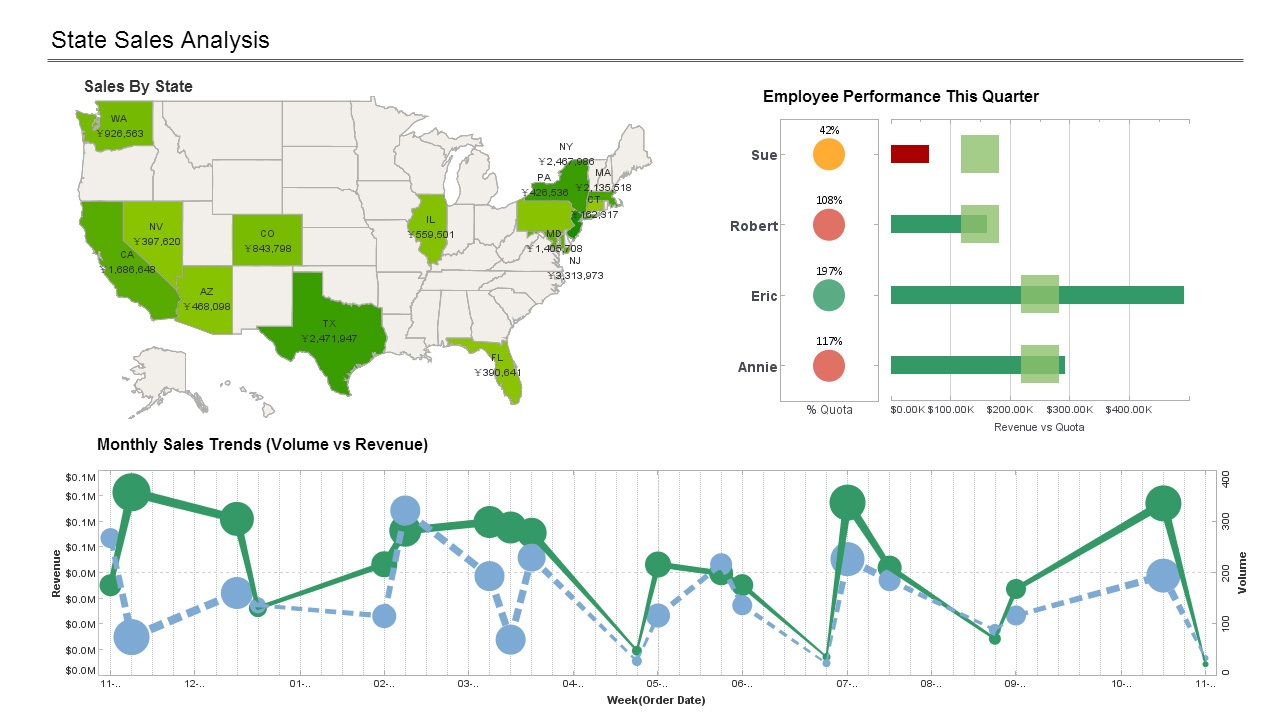Data Services Platform
Below is the continuation of the transcript of a Webinar hosted by InetSoft on the topic of Agile Data Access and Agile Business Intelligence. The presenter is Mark Flaherty, CMO at InetSoft.
Mark Flaherty (MF): So when you really look at it from the front end perspective of the agent, you have different profiles of agent in certain companies or you might have the same agent playing different roles you know playing technical support role, customer support and billing type role or playing an upsell sales and marketing kind of role and each of those interactions require a different kind of information about the customer and how you relate them all.
The typical channel has been how do you bring them all together with multiple front ends or delivery channels such as, of course, the call center, the service portal, etc. So one of the common ways how data services have been leveraged to deliver this agile business intelligence to this process is by providing a data services platform that has first of all access to disparate data resources, and we will talk not only about some of the more sophisticated customers we have, how they have enhanced the user experience beyond just sort of the core enterprise applications to bring in Web data and some of the other customer feedback information to be able to relate that back to product catalogs, etc.
 |
View a 2-minute demonstration of InetSoft's easy, agile, and robust BI software. |
BI Platform Accessing Telephony Data Source
So we obviously can take inputs into this from several computer-telephony integration products like the Avaya, the Genesys systems so you have that in call center integration. But really the core of the data services platform is to be able to access disparate resources from backend systems, content and external Web sources. This can include product catalogs which you transform and combine them into virtual data views and then deliver them based on the context and the agent profile.
The incoming call could be technical support call, it could be a billing call, it could be a customer asking about a new product offering or a special advertising offer and based on that in addition to the core information being able to pull up a lot of the additional information in relevance to that context and then delivering all of this without complexity to an agent. So this becomes a very scalable performance. So we have done that as I mentioned for several large Telcos, banks, insurance companies and retail companies and it's a highly scalable way of delivering information with multiple concurrent users accessing a rich set of data services.
Telephony data, such as call logs, call duration, and customer interactions, can be a valuable source of insights when mashed up with other enterprise data for a business intelligence dashboard. By integrating telephony data with customer relationship management (CRM) data, such as customer profiles and purchase history, businesses can gain a holistic view of customer interactions and behavior. This enables them to identify patterns, trends, and correlations that may impact customer satisfaction, retention, and overall business performance. Additionally, combining telephony data with sales and marketing data can provide valuable insights into campaign effectiveness, lead conversion rates, and customer acquisition costs, allowing businesses to optimize their marketing strategies and resource allocation.
Mmashing up telephony data with operational data, such as workforce management and performance metrics, can help businesses streamline their processes, improve employee productivity, and enhance customer service quality. Overall, integrating telephony data with other enterprise data sources empowers businesses to derive actionable insights and make data-driven decisions that drive growth and competitive advantage.
A second example I would like to focus on is around the financial reporting process or in general performance management in an organization. In this particular case again, the focus is on how can, in this case it's a pharma biotech customer of ours, and they have sell drugs across the globe in different parts of the world, and they compete in different categories. Now in order to have a real pulse of the business, management obviously was getting Excel reports, daily sales reports across their key drugs and key geographies.
Centralizing daily sales reporting for a global pharmaceutical company across 22 countries presents a multifaceted opportunity to streamline operations, enhance decision-making, and drive strategic initiatives. By consolidating sales data from diverse regions into a centralized reporting system, the company can gain a comprehensive understanding of its market performance, product demand, and revenue trends on a global scale. This centralized approach enables real-time monitoring of sales metrics, such as revenue, units sold, market share, and growth rates, providing executives and stakeholders with timely insights into the company's overall sales performance and market dynamics.
Additionally, centralizing daily sales reporting facilitates standardization and consistency in reporting practices across regions, ensuring data accuracy and comparability for effective benchmarking and analysis. Furthermore, by leveraging advanced analytics and visualization tools, the company can uncover actionable insights, identify emerging opportunities, and mitigate risks more proactively, empowering them to adapt swiftly to market changes and capitalize on growth opportunities in a highly competitive industry landscape.
| Previous: Virtualizing Access to All Data Sources |


